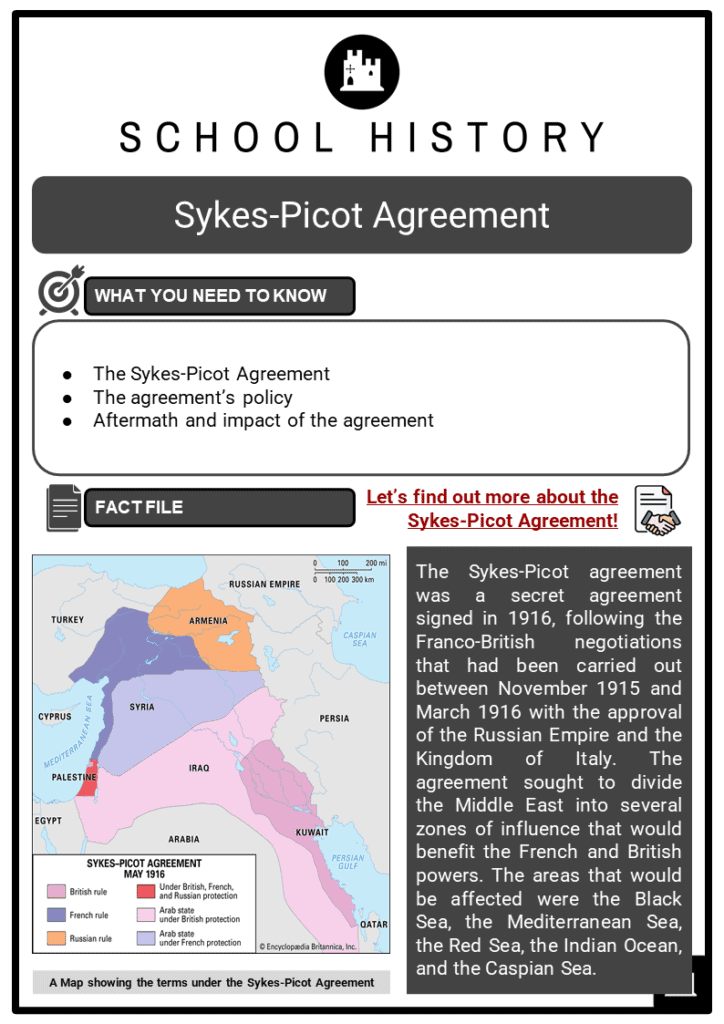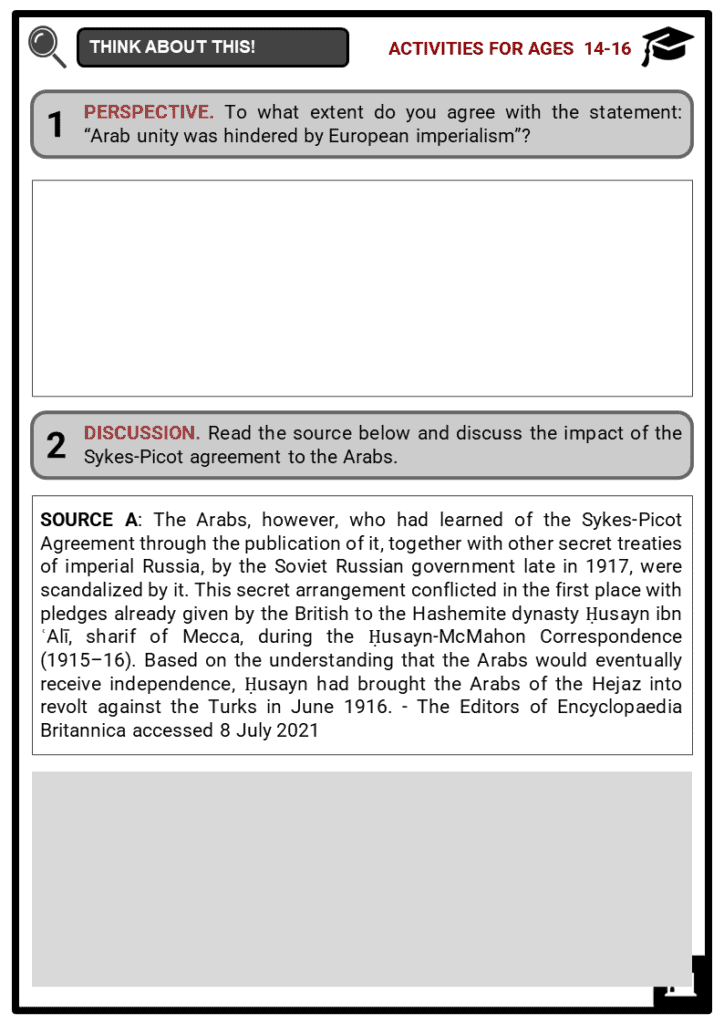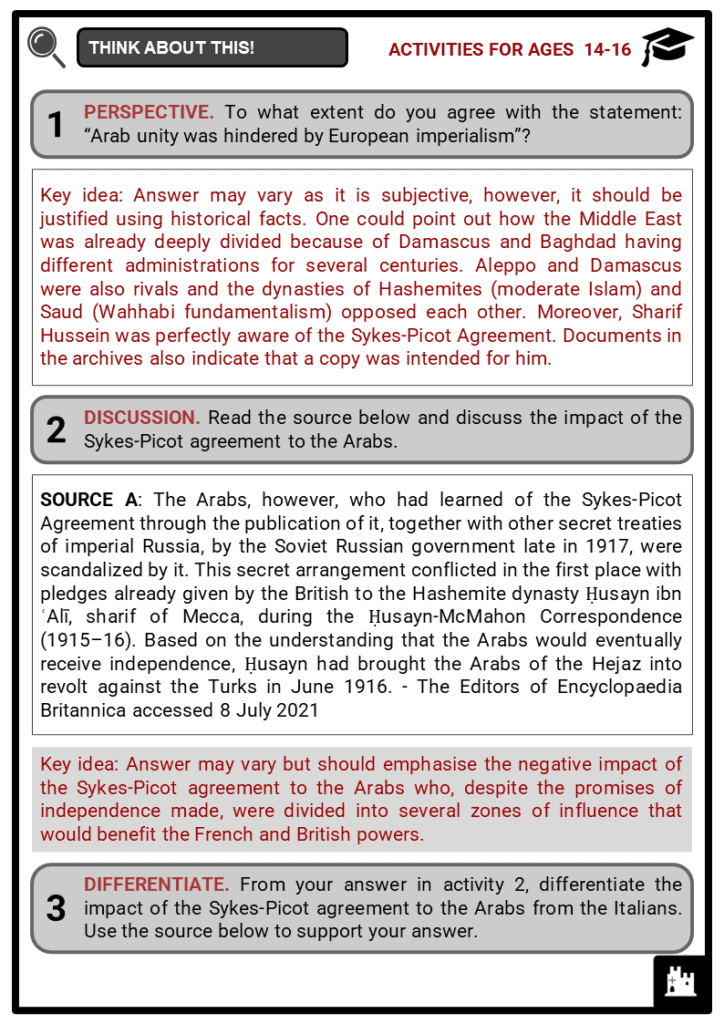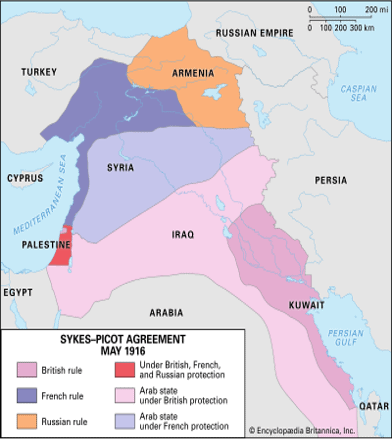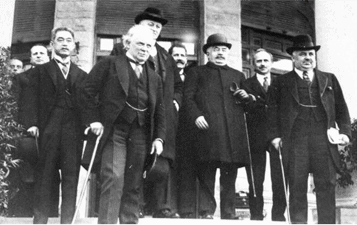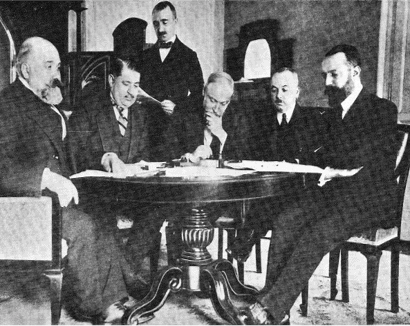Download Sykes-Picot Agreement Worksheets
Do you want to save dozens of hours in time? Get your evenings and weekends back? Be able to teach Sykes-Picot Agreement to your students?
Our worksheet bundle includes a fact file and printable worksheets and student activities. Perfect for both the classroom and homeschooling!
Table of Contents
Add a header to begin generating the table of contents
Summary
- The Sykes-Picot Agreement
- The agreement’s policy
- Aftermath and impact of the agreement
Key Facts And Information
Let’s find out more about the Sykes-Picot Agreement!
- The Sykes-Picot agreement was a secret agreement signed in 1916, following the Franco-British negotiations that had been carried out between November 1915 and March 1916 with the approval of the Russian Empire and the Kingdom of Italy. The agreement sought to divide the Middle East into several zones of influence that would benefit the French and British powers. The areas that would be affected were the Black Sea, the Mediterranean Sea, the Red Sea, the Indian Ocean, and the Caspian Sea.
- Such division of the Middle East was a result of the dismembering of the Ottoman Empire. The secret agreement was finally revealed to the general public only on 23 November 1917, in an article of Izvestia and Pravda. The Sykes-Picot agreement gained prominence and attributed certain events to the Allies during the First World War, later feeding the Arab and Islamist nationalist claims.
The Agreement
- On 16 May 1916, following a month-long preparatory work between Sir Mark Sykes and François Georges-Picot, the Sykes-Picot agreement was signed between France and the United Kingdom at Downing Street within the presence of Paul Cambon, Ambassador of France in London, and Sir Edward Gray, Secretary of State at the Foreign Office. On the British side, the Bunsen Commission, in which Sir Mark Sykes took part in the spring of 1915, laid the foundations.
- In the long term, it planned to divide the Middle East, that is to say, the space between the Black Sea, the Mediterranean Sea, the Red Sea, the Indian Ocean, and the Caspian Sea. These territories were an integral part of the Ottoman Empire. The Russian Empire participated in the deliberations and agreed, like Italy, under the terms of the secret treaty. The Middle East was divided in five zones, in spite of the promises of independence made to the Arabs.
The Agreement’s Policy
- Area A was assigned to France, whereas Area B was under British surveillance. In their respective areas, the two European powers had control over business rights and local loans. In areas A and B, only France and Great Britain were entitled to provide foreign advisers or officials in case of an attack by an Arab state or a confederation of Arab states.
- France and the United Kingdom were ready to recognise and protect an independent Arab state or a confederation of Arab states under the sovereignty of an Arab leader.
- In the brown zone, an international administration would be established. However, the international administration would be decided only after having consulted Russia, as well as the other allies and representatives of the sheriff of Mecca.
- With France in the blue zone and Great Britain in the red zone, the two countries were allowed to establish their control or a
direct/indirect administration. - The United Kingdom was granted the harbours of Haifa and St. John of Acre. Moreover, it guaranteed the exploitation of the Tigris and Euphrates rivers. With regards to area B, the government of His Majesty decided not to open any negotiations for the sale of Cyprus in favour of third powers (without the prior consent of the French government).
- Alexandretta would become an open harbour for the British Empire’s trade and there would be no taxes or facilities that discriminated against British ships or goods. In essence, the harbour would grant freedom of transit for British goods through Alexandretta. In regards to the railway connecting area B and area A, there would be no direct or indirect discrimination against British goods and trade.
- The harbour of Haifa would be open to French trade, and there would be no taxes or facilities that discriminated against French ships or goods. In essence, there would be freedom of transit for French goods through Haifa. With regards to the railway, there would be freedom of transit in the brown zone if the traded goods were destined or came from the blue zone, area A or area B. There would be no direct or indirect discrimination against French goods on the railways or against the French goods and ships in any harbour of the aforementioned areas.
- The United Kingdom would have the right to build, administer, and be the sole owner of the railway linking Haifa with Area B, and would have had the right to transport troops along this line at any time. The two governments agreed that the purpose of this railway was to facilitate the rail link between Baghdad and Haifa and they also agreed that, in the event of technical problems or impractical expenses, the French government should be prepared to consider that the line in question could also cross Polygon, Banias, Keis Marib, Salkhad, and Otsda Meskie before reaching area B.
- In the blue and red areas, as well as in the areas A and B, no tariff would be increased, nor would there be a conversion from an ad valorem tax to specific rates without prior agreement between the two powers. There would be no internal barriers between the aforementioned areas. Inward goods taxes would be collected at the port of entry and delivered to the areas of administration.
- The French government would never negotiate for the transfer of its rights and would not assign such rights to the blue zone or to any third party (except for the Arab state or the confederation of Arab states), without the prior consent of His Majesty’s government which was equally committed to the French government.
- The import of weapons within the Arab territories would be subject to British and French control.
- As protectors of the Arab state, the British and French governments agreed that they would not acquire or permit a third power to acquire territorial possessions on the Arabian peninsula or allow a third power to install a naval base on the east coast or on the islands of the Red Sea. This, however, did not prevent any adjustments to the Aden border that could be necessary as a result of Turkish aggression.
- The agreement was ratified and legalised with a proper mandate from the League of Nations at the San Remo Conference. France received a mandate for Lebanon and Syria, whereas the United Kingdom for Mesopotamia, Transjordan, and Palestine.
- The Franco-British agreement had to face a double opposition: the Turkish national revolt of Mustafa Kemal Atatürk in Anatolia opposing the Treaty of Sèvres; and the rise to power of the Hashemites in Mesopotamia (present-day Iraq) and in Syria.
- In Damascus (under the French domination), Faisal, son of the sheriff Hussein, was proclaimed king of the Arab Kingdom of Syria. The French were driven out of Anatolia by the Kemalists at the end of the campaign of Cilicia.
- However, they managed to beat Faisal and made him leave Damascus. In order to compensate him, the English installed Faisal on the Iraqi throne.
- The Treaty of Lausanne, in 1923, ratified the integration of South-East Anatolia to the new Republic of Turkey. In the end, with the 1919 cession of Mosul to England by Clemenceau and the birth of modern Turkey, as well as the creation of present-day Saudi Arabia, the division of the Middle Eastern territories never really happened.
Aftermath and Impact
- The Sykes-Picot agreement was the subject of several misconceptions. According to some historians, it is also completely wrong to talk about conspiracy or false promises since the Sykes-Picot agreement was one of those decisions made in the middle of the war, by diplomats under pressure who acted in a period of emergency.
- Another dangerous myth is the belief that Arab unity was hindered by European imperialism. In fact, this is a misconception since the Middle East was already deeply divided: Damascus and Baghdad had different administrations for several centuries, Aleppo and Damascus were rivals, and the dynasties of Hashemites (moderate Islam) and Saud (Wahhabi fundamentalism) opposed each other. Moreover, Sharif Hussein was perfectly aware of the Sykes-Picot Agreement. Documents in the archives also indicate that a copy was intended for him.
- The historian Eugene Rogan agrees with the statements made above by fellow historians, and he points out that the British did not betray the Arabs; nor did they stand on the side of the Zionists. More than wishing to create a Jewish or an Arab state, they wanted above all to defend their own interests, especially those that concerned the Suez Canal.
- Overall, the English desired to continue to control the region by undermining the nationalist movements. Thus, the promise not of a Jewish state but of a Jewish national home was made in order to create a community that would facilitate the British control over Palestine. Because of their imperialist experience, they thought they could handle the contradictory demands of both communities. It was not until 1937 that the British acknowledged that they no longer had control over the situation.
Image sources:
- https://cdn.britannica.com/91/187391-050-ADA355CB/Map-Sykes-Picot-Agreement.jpg
- https://upload.wikimedia.org/wikipedia/commons/thumb/6/63/San_Remo_Conference_1920.JPG/450px-San_Remo_Conference_1920.JPG
- https://upload.wikimedia.org/wikipedia/commons/thumb/8/84/Treaty_of_Lausanne_1912.jpg/1280px-Treaty_of_Lausanne_1912.jpg

